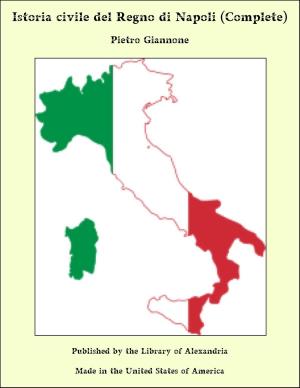| Author: | Blanche McManus | ISBN: | 9781465610805 |
| Publisher: | Library of Alexandria | Publication: | March 8, 2015 |
| Imprint: | Language: | English |
| Author: | Blanche McManus |
| ISBN: | 9781465610805 |
| Publisher: | Library of Alexandria |
| Publication: | March 8, 2015 |
| Imprint: | |
| Language: | English |
Who was Undine? Why, just the most beautiful Rhine maiden who ever existed, but she wanted to be a mortal and to leave the lovely caves below the waters and become a commonplace human being. So her great uncle Kühleborn, who was ruler of the spirits of the waters, made a mighty storm, and Undine, in the shape of a tiny baby, was washed to the shore of a lake, where the old fisher people who had lost their own child adopted her. As a little girl Undine often amazed her foster parents by her queer sayings and doings. She would play among the waves of the lake, and often would mysteriously disappear for days at a time. Now when she had grown up, a knight rode through the forest and stopped with the old fisher people, and that night another storm rose, and the lake burst its bound and encircled the house, so that they were cut off from land, and saw no way ever to rejoin the rest of the world. A priest was wrecked below their hut, and the next day Huldbrand, the knight, married Undine, who at once became mortal—the sweetest, gentlest, loveliest bride knight ever had. Then the lake sank down to its usual size, and straightway the knight bore off his bride. But Kühleborn followed them through the forest—now as a brook, and then as a waterfall—always near to watch over Undine. For a long time they were very happy; but a lady at the court, Bertalda, had loved the knight herself before ever he met Undine, and still loved him; so she did her best to persuade him that the fair Undine was a witch. Undine thought that a person who was so cruel must be unhappy, and thought it was because she was an orphan, so she found out through the water-fairies that Bertalda was the lost daughter of the fisher-folk, her foster parents, and sent for them. But Bertalda was furious at being discovered to be a peasant, and hated Undine still more, and did more to set Huldbrand against his bride. Now Undine knew if her husband was cruel to her or loved another, she would have to kill him and rejoin the water-people; so she did her best by loving ways to inspire him with faith, but he grew more and more suspicious, especially when Undine had the great well of the castle covered with a huge stone, for she feared lest Huldbrand’s treatment would cause the Rhine fairies, who could only enter the castle by that spring, to do him injury.
Who was Undine? Why, just the most beautiful Rhine maiden who ever existed, but she wanted to be a mortal and to leave the lovely caves below the waters and become a commonplace human being. So her great uncle Kühleborn, who was ruler of the spirits of the waters, made a mighty storm, and Undine, in the shape of a tiny baby, was washed to the shore of a lake, where the old fisher people who had lost their own child adopted her. As a little girl Undine often amazed her foster parents by her queer sayings and doings. She would play among the waves of the lake, and often would mysteriously disappear for days at a time. Now when she had grown up, a knight rode through the forest and stopped with the old fisher people, and that night another storm rose, and the lake burst its bound and encircled the house, so that they were cut off from land, and saw no way ever to rejoin the rest of the world. A priest was wrecked below their hut, and the next day Huldbrand, the knight, married Undine, who at once became mortal—the sweetest, gentlest, loveliest bride knight ever had. Then the lake sank down to its usual size, and straightway the knight bore off his bride. But Kühleborn followed them through the forest—now as a brook, and then as a waterfall—always near to watch over Undine. For a long time they were very happy; but a lady at the court, Bertalda, had loved the knight herself before ever he met Undine, and still loved him; so she did her best to persuade him that the fair Undine was a witch. Undine thought that a person who was so cruel must be unhappy, and thought it was because she was an orphan, so she found out through the water-fairies that Bertalda was the lost daughter of the fisher-folk, her foster parents, and sent for them. But Bertalda was furious at being discovered to be a peasant, and hated Undine still more, and did more to set Huldbrand against his bride. Now Undine knew if her husband was cruel to her or loved another, she would have to kill him and rejoin the water-people; so she did her best by loving ways to inspire him with faith, but he grew more and more suspicious, especially when Undine had the great well of the castle covered with a huge stone, for she feared lest Huldbrand’s treatment would cause the Rhine fairies, who could only enter the castle by that spring, to do him injury.















